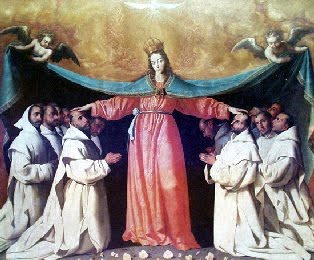 The “Questions Answered” section in the June 2009 edition of “Homiletic & Pastoral Review” may be of interest to those who pray the Liturgy of the Hours. The question concerns the Psalm Prayers found in the English language–American version of the breviary. The answer to the question is provided by the publication’s Contributing Editor and a familiar face to EWTN viewers, Father Brian T. Mullady, O.P. Here’s how it appears in the publication:
The “Questions Answered” section in the June 2009 edition of “Homiletic & Pastoral Review” may be of interest to those who pray the Liturgy of the Hours. The question concerns the Psalm Prayers found in the English language–American version of the breviary. The answer to the question is provided by the publication’s Contributing Editor and a familiar face to EWTN viewers, Father Brian T. Mullady, O.P. Here’s how it appears in the publication:Question: Throughout the four-week psalter we encounter the “Psalm Prayer.” These are not contained in the Editio Typica nor in the U.K. volumes: solely in the American edition of the Liturgy of the Hours. Who decided to insert these prayers, who composed them and why?
Answer: One of the animating principles behind Vatican II was called resourcement, a return to the sources of our faith. This was true in theology and it was also true in the liturgy. The revised rites exhibit numerous attempts to return to practices used in the early Church, before the evolution that occurred in the Middle Ages. Some of these have been more effective and helpful than others.
One example of this return is the addition to the Liturgy of the Hours of the Psalm Prayer, which is printed in the American edition of the breviary immediately after the psalm and before the antiphon. According to liturgical experts, the present prayers are probably German in origin. They most likely reflect a practice of the monks in Egypt. When they prayed a psalm they would first listen and since many of them were illiterate, individuals would repeat phrases from the psalm or add some petitions. The abbot would then pull them all together according to a common theme. This practice died out long ago.
It seems that, for the present liturgy, it was thought advisable for more solemn celebrations to revive the custom of composing thematic applications of the meaning of the psalm, much as those ancient monks. These were approved in Latin and published by the Holy See for optional use. They are not printed in the Latin edition of the breviary, nor are they in many of the vernacular editions including the edition published in the United Kingdom. The editors of the breviary used in the United States evidently thought it would be helpful to provide all aids to recitation which were available and so they added the prayers in the present edition. They are given to aid reflection or for private meditation.
Some priests and religious seem to think because they are printed in the breviary that they are obligatory. They are not. In fact, the antiphon placed with the psalm provides the primary application and reflection on the psalm. There is nothing wrong with using the Psalm Prayers, but they are strictly optional and as such do not form part of the Liturgy of the Hours. There is therefore no obligation to use them.











